Biryani Rice (or biryani chawal) isa native of North India and is a mildly flavored rice dish with the aroma that could send your tummy craving and begging for it. It is best served with rich or spicy curry as viand. After cooking, you can store biryani rice in an airtight container and refrigerate. Shelf life can be up to four or five days.
Biryani Rice Recipe
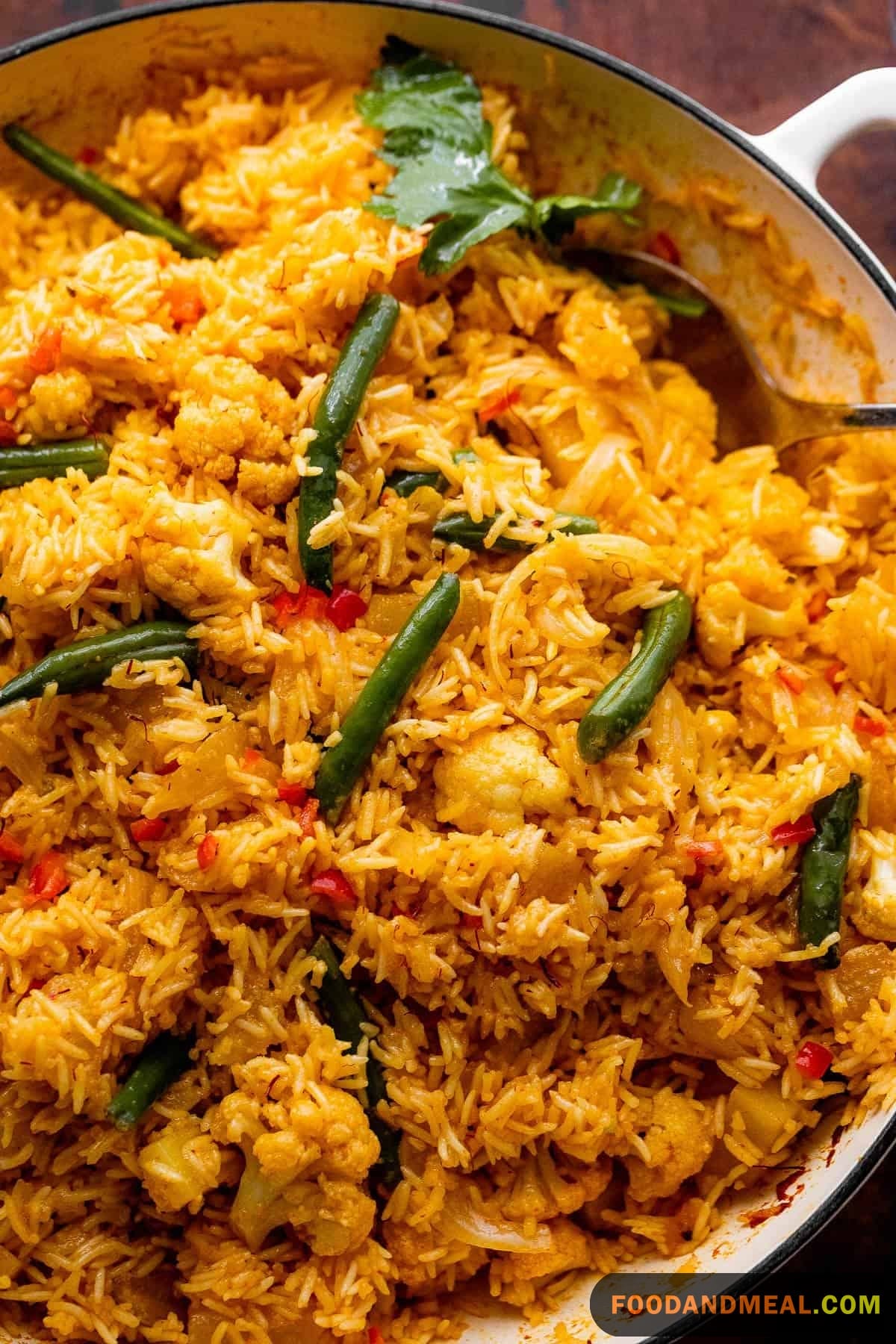
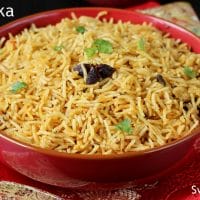
Biryani Rice or Biryani Chawal
Equipment
Ingredients
- 1 cup basmati rice or long grain rice
- 2 cups water
- 4 green cardamom
- 1- inch piece cinnamon stick
- 3 cloves
- 4-5 black peppercorns
- ½ tsp. cumin seeds
- ½ cup onion finely chopped
- 2 slits green chilies
- 1 bay leaf
- 2 tbsp. ghee or oil
- Salt
For garnish
- 5-6 cashew nuts cut into half
- 2 tsp. oil
- 3-4 almonds sliced
- ½ cup onion
Instructions
- Wash the long grain rice under running water and soak into warm water for about 20 minutes.
- Drain the water using colander and let the rice dry out for 15 minutes.
- Put pan over a medium flame and pour oil or ghee into it. When the oil is hot enough, put whole spices and fry them until you can smell their aroma.
- Add the cumin seeds with the spices and let them sizzle.
- Proceed into adding the onions, chillies and season with salt. Fry the onions until they get the translucent coloring.
- Add the rice and sauté the mixture for about 1-2 minutes, and then add water. Let the rice come into a boil.
- When the rice boils, cover pan with lid and lower the heat to the lowest possible flame your stove can come up with.
- Cook the rice for the next 18 minutes without uncovering the pan.
- After 18 minutes, turn off the heat but do not open yet the lit. Keep it like this for another 10 minutes for this enables the rice grains to gain firmness.
- While you are letting the rice rest, heat the pan and add 2 tsp. of oil. Fry the almonds and cashews until they have the light brown coloring. Remove them from the pan and transfer into a bowl.
- Next, fry the onions till they attain are browned and season with salt.
- Open the lid of the pan with rice and ruffle the rice.
- You can transfer the rice in a dish or any container before garnishing it with the nuts and fried onions.
- How to Prepare Biryani Rice

Video
Notes
Nutrition
© Food And Meal
This website provides approximate nutrition information for convenience and as a courtesy only. Nutrition data is gathered primarily from the Spoonacular Database, whenever available, or otherwise other online calculators.
Alternative method for preparing the Biryani Rice
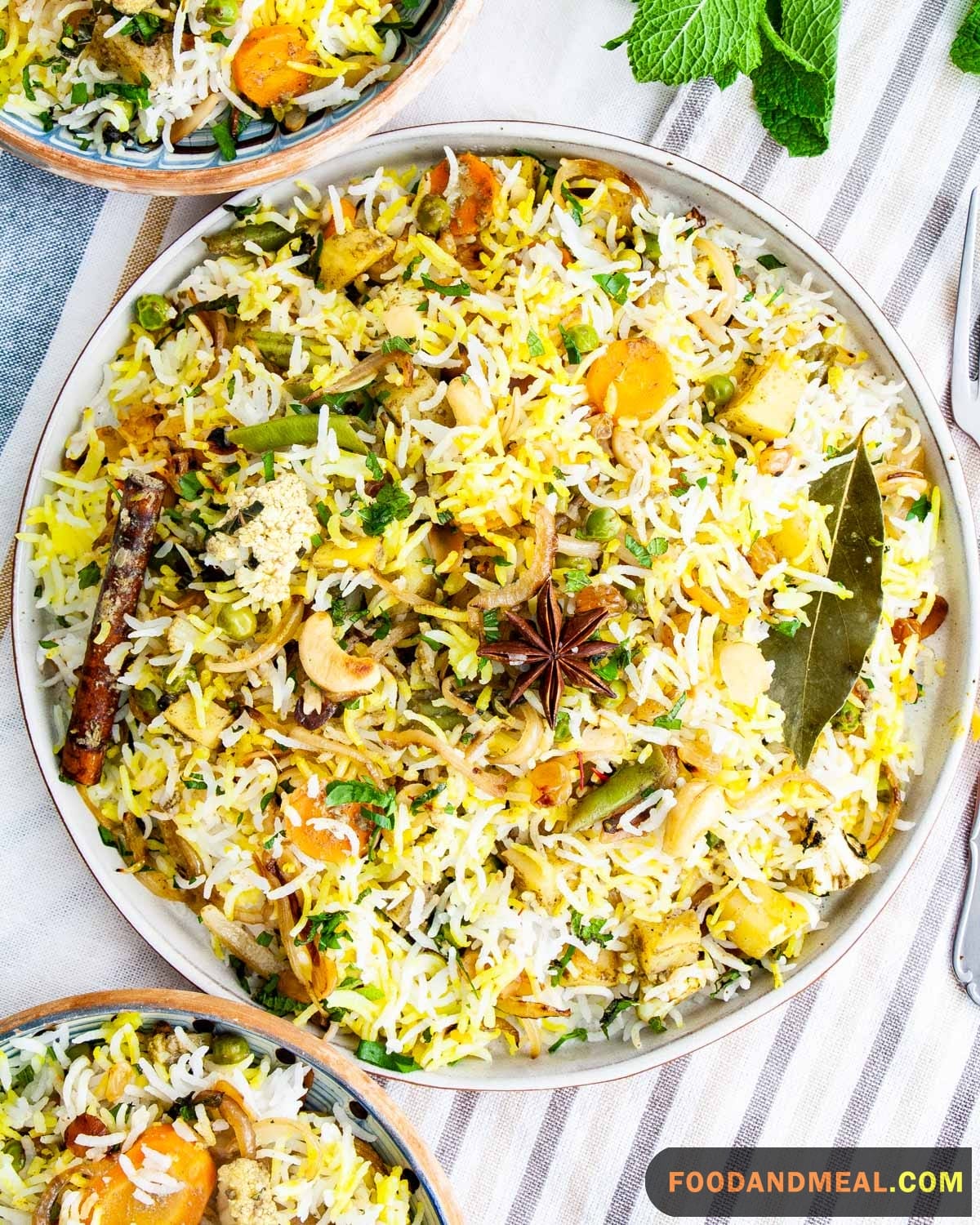
- Absolutely, I’d be thrilled to share an alternative method for preparing the Biryani Rice. This time, let’s switch things up a bit and use a pressure cooker. The pressure cooker is a fantastic kitchen appliance that significantly reduces cooking time while still delivering a flavorful and aromatic Biryani.
- First, you’ll need to prepare your ingredients as usual. Rinse 2 cups of Basmati rice under cold water until the water runs clear. Soak the rice in water for about 30 minutes, then drain. Meanwhile, marinate your choice of meat (chicken, mutton, or vegetables for a vegetarian option) with yogurt, ginger-garlic paste, and Biryani spices.
- Now, let’s move on to the pressure cooker magic. Heat some oil or ghee in the pressure cooker. Add whole spices like cloves, cardamom, and cinnamon, followed by sliced onions. Sauté until the onions turn golden brown.
- Next, add the marinated meat or vegetables to the cooker and sauté for a few minutes until they are well coated with the spices. Now, layer the soaked and drained rice over the meat or vegetables. Pour in enough water to just cover the rice (the exact amount may vary depending on your pressure cooker and type of rice, but a good rule of thumb is to add 1.5 times the amount of rice).
- Close the lid of the pressure cooker and cook on high heat until you hear one whistle. Then, reduce the heat to low and cook for another 10-15 minutes. Turn off the heat and let the pressure release naturally.
- Once the pressure is released, open the lid and gently fluff the Biryani with a fork. And there you have it, a delicious Biryani Rice made easier and quicker with the help of a pressure cooker!
- Remember, the joy of cooking lies in experimentation. So don’t hesitate to try new methods and appliances. Happy cooking!
Tips for making Biryani Rice
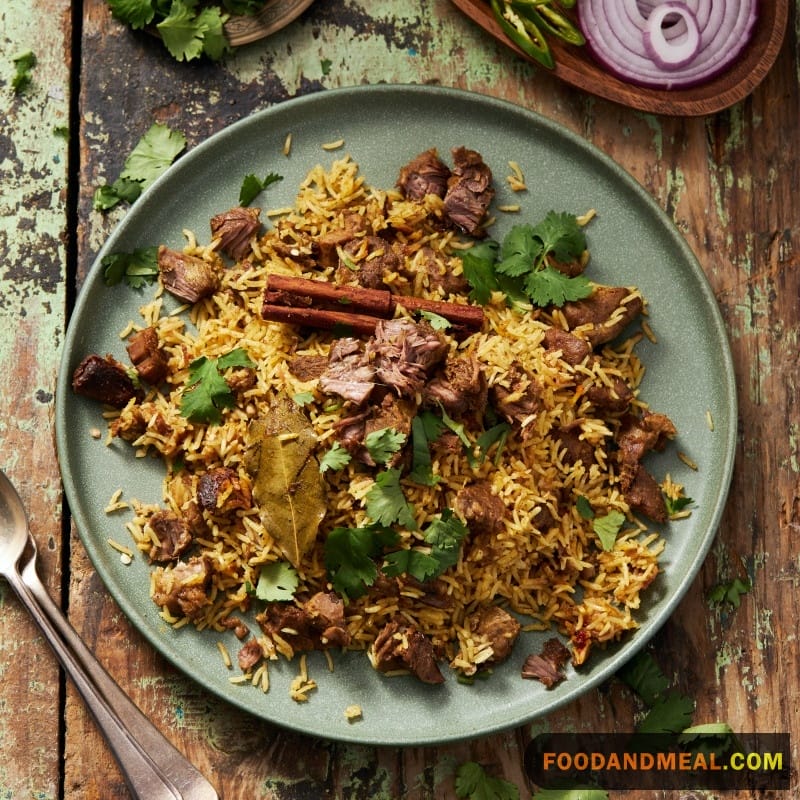
Biryani Rice: Serving Suggestions
- Pair it with Protein: Biryani pairs well with a variety of proteins. Try it with yogurt-based raita, hard-boiled eggs, or a side of grilled chicken or beef for a hearty meal.
- Garnish Generously: A sprinkle of fried onions, chopped coriander, or roasted cashews can add an extra layer of flavor and texture.
- Serve with Sides: A tangy pickle or a simple salad with cucumbers and tomatoes can complement the rich flavors of the Biryani.
- Pour in some Gravy: A side of gravy, like salan, can moisten the Biryani and balance its spices.
- Beverage Pairings: A cold lassi or a warm cup of chai can be refreshing with a spicy and hearty Biryani.
Cooking Tips for Perfect Biryani Rice

- Rinse your Rice: Rinse the Basmati rice under cold water until the water runs clear. This removes excess starch and helps the grains stay separate.
- Soak the Rice: Soaking the rice in water for at least 30 minutes before cooking helps it to expand to maximum length.
- Use Quality Spices: Fresh, high-quality spices make a significant difference in the taste of your Biryani.
- Layer Correctly: Biryani is all about layers. Start with a layer of partially cooked rice, add a layer of meat or vegetables, and repeat. Don’t stir these layers as you want them distinct.
- Avoid Overcooking: One common mistake is overcooking the rice during the initial boiling stage. Remember, the rice will continue to cook when it’s layered with the meat and steamed, so it should only be 70-80% cooked initially.
Frequently Asked Questions About Biryani Rice
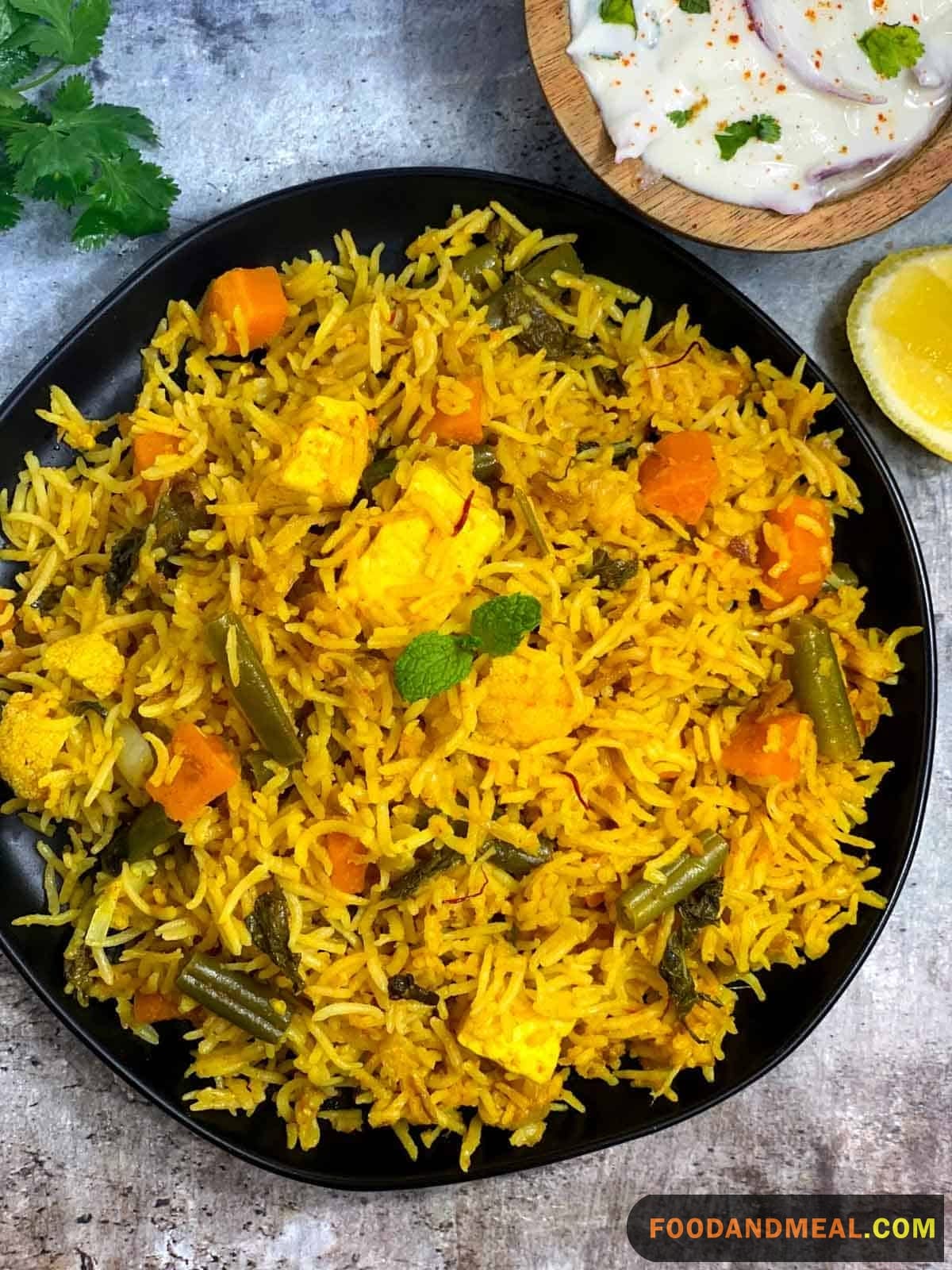
- What is the best type of rice to use for Biryani? The long-grain Basmati rice is your best bet for making Biryani. It is aromatic and its grains remain separate, giving the Biryani its characteristic fluffy and non-sticky texture.
- Can I prepare Biryani using brown rice? Yes, you can use brown Basmati rice. However, keep in mind that it takes longer to cook than white rice and may require additional water.
- How do I prevent my Biryani from becoming too spicy? The spiciness of Biryani primarily depends on the quantity and type of spices used. If you’re sensitive to heat, consider reducing the amount of chili powder and other hot spices in the recipe.
- Why does my Biryani often turn out dry or burnt? This might occur if the heat is too high during the final cooking stage or if there isn’t enough liquid. Always remember to cook Biryani on low heat after the initial high-heat phase, and ensure that there’s enough moisture before sealing the pot.
- How should I store leftover Biryani? Leftover Biryani should be cooled at room temperature and then transferred to an airtight container. It can be refrigerated for up to 4 days. To reheat, use a microwave or heat it on the stove with a little bit of added water to prevent dryness.
Discover the secrets of perfect Biryani Rice with our comprehensive guide. Click to learn more!
Experience the culinary brilliance of Chef John at Food And Meal Restaurant. With over 20 years of global expertise, My innovative creations and unwavering dedication to cooking have earned me a well-deserved reputation. My passion for gastronomy is showcased in every dish, combining fresh, local ingredients with harmonious flavors and captivating presentations. My ability to tell a story through my food reflects my profound understanding of culture and emotion.


